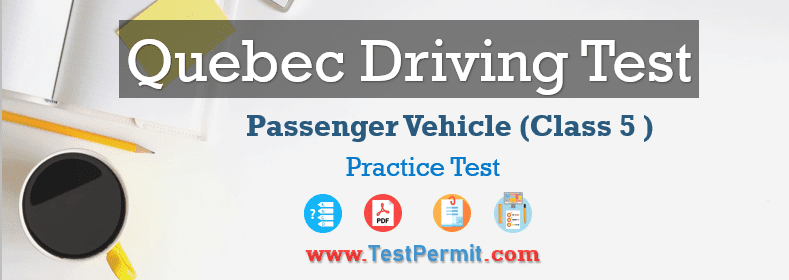Québec Class 5 Driving Theoretical Exam Question Answers Practice Test: Québec Driving Knowledge Practice Test: Société de l’assurance automobile du Québec or SAAQ (English: Quebec Automobile Insurance Corporation).
The Web site of the Société de l’assurance automobile du Québec (saaq.gouv.qc.ca) has a great deal of additional information on a number of subjects related to road safety and its requirements. For any legal references, please refer to the Highway Safety Code and attendant regulations
Québec Class 5 Driving Theoretical Exam Test
| Test Name | SAAQ Québec Driving Licence Knowledge Test |
| Language | English |
| Licence | Passenger Vehicle |
| Total Questions | 50 |
| Test Type | Sample Question Answers |
| Test Preparation | Class 5 Driving Theoretical Exam |
| Province | Québec |
| Topics | Driving Knowledge |
See also:
- SAAQ Passenger Vehicle Knowledge Practice Test
- SAAQ Class 5 Knowledge Test 2023
- Québec Class 5 Driving Theoretical Exam Test
- SAAQ Road Signs Practice Test
